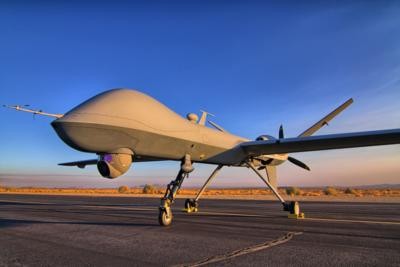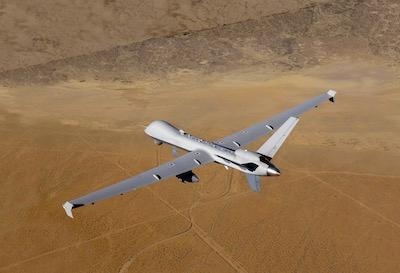Seasons Don’t Fear the Reaper …
General Atomics—the San Diego-based energy and defense concern specializing in research and technology development and maker of the enigmatic Predator family of Remotely Piloted Aircraft (RPA)—announced in November 2022 that it had flown the first production MQ-9A Multi-Domain Operations (M2DO)-ready variant of the U.S. Air Force’s MQ-9A Reaper.

Multi-Domain Operations are abstract concepts so nebulous and convoluted that the branches of the United States Military differ in their definitions of such. The U.S. Army, for example, cites Multi-Domain Operations as: “the combined arms employment of joint and Army capabilities to create and exploit relative advantages that achieve objectives, defeat enemy forces, and consolidate gains on behalf of joint force commanders. Employing Army and joint capabilities makes use of all available combat power from each domain to accomplish missions at least cost.”
The U.S. Air Force, conversely, defines Multi-Domain Operations as: “the coordinated execution of authority and direction to gain, fuse, and exploit information from any source to integrate planning and synchronize execution of Multi-Domain Operations in time, space and purpose to meet the commander’s objectives.”
Notwithstanding the irksome vagaries surrounding its purpose, the upgraded version of the Block-5 MQ-9A—known also as the “-25”—includes key features conducive to the future integration and fielding of Open Mission Systems (OMS) as well as new sensors that will further expand the MQ-9A Reaper’s strategic reconnaissance capabilities. The term Open Mission System denotes open architecture design by which military services may rapidly add new or improved capabilities to vehicles or weapon systems, regardless of supplier, and at a reduced cost.
Engineered to exceed manned aircraft reliability standards, the new “-25” MQ-9As are equipped with fault-tolerant flight control systems, triple-redundant avionics, improved power distribution and redundancy, radar altimeters, nose wheel steering, upgraded GPS systems, and enhanced angle of attack (AoA) sensors—the cumulative agency of which allows the slick contraptions to execute functions beyond the purview of previous RPA generations.
The machines also sport full-motion video and synthetic aperture radar, allowing them to provide surveillance capability for 26 straight hours at altitudes up to FL450.

The U.S. Air Force and U.S. Marine Corps will both receive the improved MQ-9A Block 5 “-25” Multi-Domain Operations-ready aircraft under current contracts; however, the total number of aircraft receiving subject improvements has not been—nor likely shall be—disclosed.
General Atomics vice president of USAF programs Claudia Mowery remarked: “We’re excited to position the MQ-9A enterprise for new missions through these capabilities. Future funding could potentially expand these capabilities to the entire MQ-9A fleet.”
In addition to RPAs the likes of the MQ-9 and related pilot training and support services, General Atomics Aeronautical Systems provisions U.S. warfighters with radars, electro-optics, and assorted high-tech mission systems. The company also produces ground control stations, a variety of sensor control/image analysis software packages, and develops meta-material antennas—a class of antenna that incorporates materials engineered with novel, often microscopic structures used to produce unusual physical properties.
 ANN's Daily Aero-Linx (05.06.25)
ANN's Daily Aero-Linx (05.06.25) ANN's Daily Aero-Term (05.06.25): Ultrahigh Frequency (UHF)
ANN's Daily Aero-Term (05.06.25): Ultrahigh Frequency (UHF) ANN FAQ: Q&A 101
ANN FAQ: Q&A 101 Classic Aero-TV: Virtual Reality Painting--PPG Leverages Technology for Training
Classic Aero-TV: Virtual Reality Painting--PPG Leverages Technology for Training Airborne 05.02.25: Joby Crewed Milestone, Diamond Club, Canadian Pilot Insurance
Airborne 05.02.25: Joby Crewed Milestone, Diamond Club, Canadian Pilot Insurance




